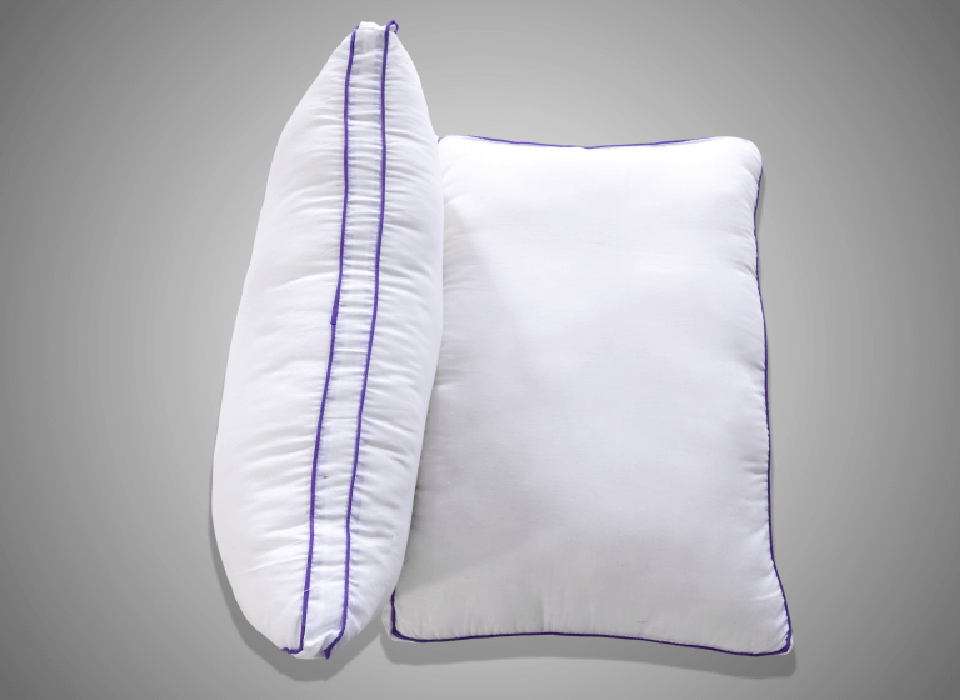How to Choose the Perfect Pillow for a Good Night’s Sleep?
We’ve all experienced the frustration of a restless night’s sleep – tossing and turning, trying to find that elusive comfortable position. While there are numerous factors that contribute to a restful night’s sleep, one often overlooked but vital component is the pillow.
A well-chosen or perfect pillow can make a world of difference in the quality of your sleep. In this guide, we’ll walk you through the essential considerations for selecting the best pillow to ensure you wake up refreshed and revitalized each morning.
1. Understand Your Sleeping Style
The first step in selecting the ideal pillow is to understand your preferred sleeping position. People tend to fall into three primary sleeping styles: back, side, and stomach.
Back sleepers generally benefit from a pillow that offers medium support to maintain proper alignment of the head, neck, and spine.
Side sleepers require a firmer pillow to fill the gap between the shoulder and ear, ensuring spinal alignment.
Stomach sleepers typically need a softer, thinner pillow to prevent straining the neck during sleep.
By identifying your predominant sleeping style, you can narrow down your options and choose a pillow that accommodates your specific needs.
2. Consider Pillow Fill Materials
Pillow fill materials play a significant role in determining the level of support and comfort a pillow provides. Here are some common fill materials to consider:
Memory Foam: This material conforms to the shape of your head and neck, offering excellent support and pressure relief. Memory foam pillows are particularly favored by back sleepers and those seeking extra neck support.
Latex: Latex pillows are resilient and provide both support and breathability. They’re a good choice for people who want a more natural and hypoallergenic option.
Feather and Down: These pillows offer a plush and soft feel. They can be molded easily to suit your preferred sleeping position but might not provide as much support as other options.
Polyester: Synthetic pillows are often budget-friendly and come in various firmness levels. They are a suitable option for people with allergies, as they are less likely to harbor dust mites.
Buckwheat Hulls: These pillows provide customizable support by allowing you to adjust the amount of filling. They’re great for people who like a more malleable pillow.
3. Determine Your Pillow Loft
Pillow loft refers to the height or thickness of the pillow when it’s laid flat. The right loft is crucial for maintaining proper spinal alignment. Here’s how to match the loft to your sleeping style:
For back sleepers, a medium loft pillow that supports the natural curve of the neck is recommended.
Side sleepers should opt for a higher loft pillow to keep the head and neck aligned with the spine.
Stomach sleepers need a low loft pillow to prevent the neck from arching upward.
4. Assess Allergies and Sensitivities
If you’re prone to allergies or have respiratory sensitivities, it’s crucial to choose a pillow that won’t exacerbate these issues. Hypoallergenic pillows, such as those made from latex or polyester, are excellent choices. Additionally, using pillow protectors and regularly washing pillowcases can help keep allergens at bay.
5. Test the Pillow if Possible
While shopping online offers convenience, testing a pillow in-store (if possible) is beneficial. Lie down on a mattress similar to your own and try out different pillows to gauge their comfort and support. This hands-on approach can provide valuable insights that online reviews might not capture.
6. Check for Certifications
When choosing a pillow, look for certifications that indicate quality and safety standards. Certifications like CertiPUR-US for foam pillows or OEKO-TEX Standard 100 for textiles can give you confidence in the product’s materials and manufacturing process.
7. Invest in Quality
A pillow is an investment in your sleep quality and overall well-being. While budget considerations are important, a higher-quality pillow can offer better support and durability, ultimately enhancing your sleep experience. Keep in mind that a well-made pillow can last for several years, making the initial investment worthwhile.
8. Replace Your Pillow Regularly
Even the best pillows don’t last forever. Over time, pillows accumulate dust mites, allergens, and lose their supportive qualities. As a general rule of thumb, consider replacing your pillow every 1 to 2 years, or when you notice it’s no longer providing the support and comfort you need.
9. Read Reviews and Gather Recommendations
Before making a final decision, read customer reviews and seek recommendations from friends and family. Learning from others’ experiences can help you narrow down your choices and find a pillow that aligns with your preferences.
10. Trial Periods and Return Policies
Some companies offer trial periods for their pillows, allowing you to sleep on the pillow for a designated period before committing to the purchase. You can purchase online pillows as per your choice. Additionally, check the return policy to ensure you have the option to return or exchange the pillow if it doesn’t meet your expectations.
Conclusion
Choosing the perfect pillow might require a bit of research and trial, but the rewards in terms of better sleep, deeprest and overall well-being are well worth the effort.
Remember to consider your sleeping style, pillowfill materials, loft preferences, allergies, and quality certifications when making your decision. By investing time and care into selecting the right pillow, you’re investing in your health and ensuring you’ll enjoy a restful and rejuvenating night’s sleep for years to come.










